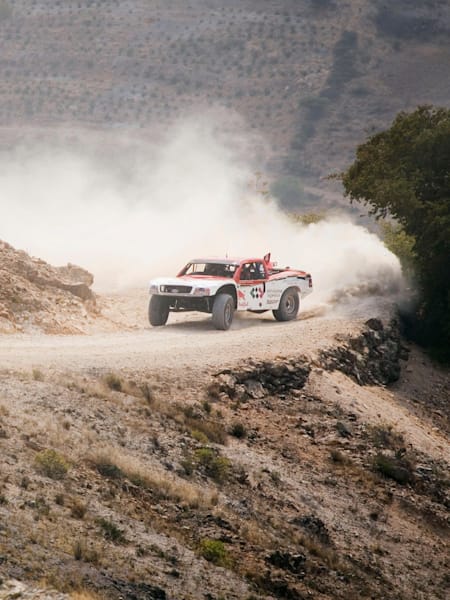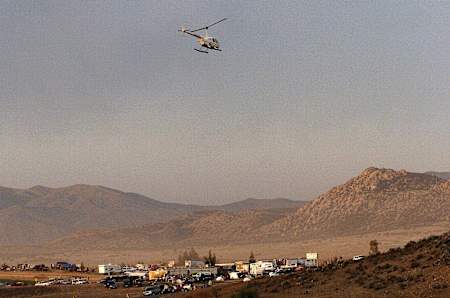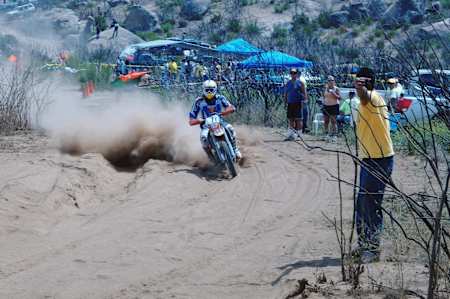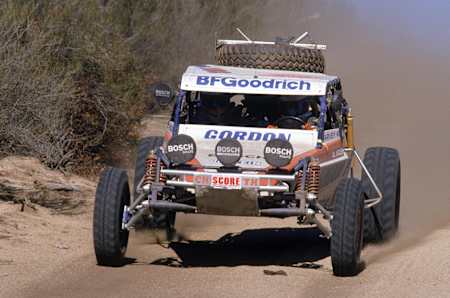The Baja 500 desert race, which sees drivers on two and four-wheel vehicles competing in arduous off-road conditions on Mexico's Baja California Peninsula, is celebrating its 50th gruelling anniversary this year. To save you getting hot under the collar while discussing the finer points of this legendary motorsports event, we've created this bluffer's guide that tells you everything you need to know.
What is the Baja 500?
The off-road race is held in Baja California, Mexico, and is round two of the four-race SCORE (Southern California Off Road Enthusiasts) series. The competition, fêted as one of the top motorsport shows in the world, starts and finishes in the town of Ensenada and runs from May 30 to June 3 this year. The longer Baja 1000 takes place later in the year, from November 14–18.
The course is around 500 miles long, and the event hasn't altered much over the past 50 years, with the course is formed of a loop that takes in the rugged Baja California peninsula.
Where did it all begin?
American professional stuntman and motorcycle racer Bud Ekins, who worked as a stunt double for Steve McQueen during filming of the famous motorcycle jump scene in The Great Escape, helped to pioneer desert racing as a sport. In 1964, Ekins and his brother Dave rode a motorcycle the length of the Baja California Peninsula in just under 40 hours to set a new record.
The Ekins brothers' feat of endurance inspired Ed Pearlman to found NORRA – the National Off-Road Racing Association – and set up the Baja 1000. The first Baja 500 was held a few years later, in 1969, and featured 163 starters and 73 finishers, including Ekins, who raced alongside Steve McQueen and won the inaugural race on four wheels.
Oh no! This video is currently not available.
What's the course like?
It's not for the faint-hearted and this year's is reported to be the toughest yet, at 542 miles (872km). The terrain is sandy and rocky, and features high-speed dirt trails, canyons, coastline. At points it runs at 915m above sea level. There will be four checkpoints and competitors will have 22 hours to complete the race, following staggered starts for different classes of vehicle.
What happens during the race?
Competitors come from all over the world, including the United States, New Zealand and Italy, and more than 350 entrants are expected to start this year's race.
The event includes various vehicle classes, such as small and large bore motorcycles, stock Volkswagens, production vehicles, buggies, trucks, and custom fabricated race vehicles. Motorcycles and quad bikes are the first to set off, at 5am, and then five hours later the classes containing cars, UTVs and trucks leave the start.
The first checkpoint is in El Chinero, at 174 miles, with the other three at 100-mile (160km) intervals in San Matias, Vicente Guerrero and Santo Tomas.
Who are the big names associated with the race?
Bud Ekins may have started it all those years ago, but other big names in the sport have included Parnelli Jones, Ivan Stewart, Robby Gordon and the McMillin family.
Retired racing driver Parnelli Jones won races in many different disciplines of motorsports, including the Indianapolis 500, the Pikes Peak International Hill Climb and, of course, the Baja 500, which he won in 1973. He stepped away from off-road racing after he was involved in a serious accident in the 1974 edition of the race.
Ivan Stewart, known as the Ironman, won a record 17 Baja 500s through the 1970s and '80s, while Robby Gordon won four Baja 500 races in 1989, 1990, 2005 and 2013.
The McMillin family, meanwhile, has a history with Baja California spanning more than four decades. Last year Andy McMillin, a third generation off-road racer, was victorious for the second time.
McMillin's grandfather, the late Corky McMillin, began racing in Baja in 1976. His son's, Mark and Scott, got involved and the racing legacy has continued into the next generation. During his racing career, Corky McMillin had overall wins in the Baja 500 and Baja 1000. He died aged 76 in 2005, three weeks after having a heart attack during a race.





